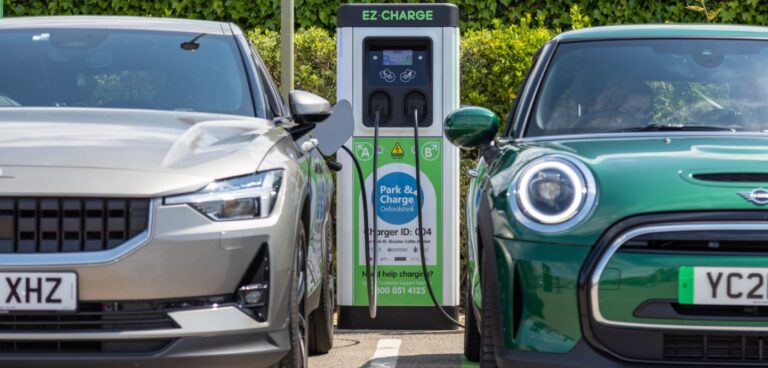Why a policy approach that is not only ‘innovative’, but also inclusive, is needed if the transition to EVs is to accelerate and succeed…
The transition to electric vehicles (EVs) is the flagship policy to decarbonise transport in the UK. So enthusiastic is the government about this policy, it was part of its four-part mantra on ‘coal, cars, cash and trees’ – demanding commitments from the world during its leadership of COP26.
Yet even ignoring all the other policies also needed to decarbonise transport, if the transition to EVs is to be successful, it must also be fair, inclusive and equitable. That means finding out and recognising what different people need from the transition, getting different communities involved in its implementation, as well as making EVs more accessible to everyone, no matter who they are or where they live.
The socially and spatially uneven distribution of EV uptake and infrastructure so far means that the transition cannot yet be called equitable. Wealthier, better-educated men are hugely overrepresented among current EV owners and drivers (and not just in the UK, as studies across North America and Europe have shown). Public EV charging is easy to find and use in some places, whilst options in other areas are scarce.
Nonetheless, the EV transition is still in the ‘early adoption’ phase, and these inequalities may well be temporary. Much will depend upon whether policy supports the equitable diffusion of EV adoption opportunities.
There are signs in the government’s recently published EV Infrastructure Strategy that the importance of equity has not gone unnoticed. The strategy acknowledges that charging opportunities should not be limited by income or location. There are specific references to the diverse needs of EV drivers (or future EV drivers) who are disabled, who need to drive for work, and/or who cannot charge from their domestic electricity due to a lack of a private driveway.
There are also policy proposals to address these diverse needs and make EV adoption more equitable – from inclusive design principles to revising the home charging grants to focus on provision for flats and rented accommodation.
However, the recurrent assumptions that on-street charging will fulfil the needs of the majority of households who cannot charge from home do not reflect the findings of our recent research, which included a large survey of car drivers in the UK who would need to park and charge in public spaces.
In a Stated Choice experiment, we found that on-street spaces are not intrinsically more attractive, particularly if they are not perceived to offer the same level of personal safety, security or certainty as a local charging hub in a car park. The idea of a community asset as well as neighbourly support on EV ease-of-use and coordinating charging were also appealing in the qualitative part of our research.
Given that on-street charging is often expensive to install, challenging to operate commercially, and may result in cluttered pavements and unwanted liabilities for local governments, it is odd that overnight local charging hubs, and indeed peer-to-peer charging, are only mentioned in passing without a specific action or funding stream attached.
The oversight may be attributed to the division of responsibility described in the strategy, where local governments are expected to ‘engage with residents and businesses’ in their areas. Central government sees itself in a supporting role only in terms of understanding what future users want or need from EV Infrastructure.
On the other hand, as we are finding in another research project, local governments too may be overly focused on ensuring impacts, benefits, and opportunities are equally distributed, at the expense of recognising and incorporating diverse perspectives and knowledge.
For example, policy supports the introduction of electric car clubs by installing bays and chargepoints. Shared EVs are both expected to provide an opportunity for residents without the means to purchase an EV to access one and to encourage wealthier households to dispense with their second car. Yet there is little knowledge of which expectations they fulfil.
How can the potential of such a policy be maximised without knowing who uses or would like to use EV car clubs – or peer-to-peer sharing of EVs and EV charging – and why? The motivations and barriers to local participation must be better understood.
Such understanding can be achieved through asking how different policies can extend opportunities, meet diverse mobility needs and social practices, and involve individuals in a fairer transition to EVs. These questions are not just academic. They are becoming ever more urgent as supply chain failures slow the sales of new EVs, with knock-on effects for the second-hand market and affordability at the same time as the cost of running an EV is falling relative to fossil-fuel vehicles and demand for new and used EVs is rising.
In conclusion, if the transition to EVs is to accelerate and succeed, a policy approach is needed that is not only ‘innovative’, but also inclusive.
Hannah Budnitz is a research associate in urban mobility at University of Oxford’s Transport Studies Unit. Her research concentrates on the interactions between land use and accessibility, sustainability and travel behaviour





